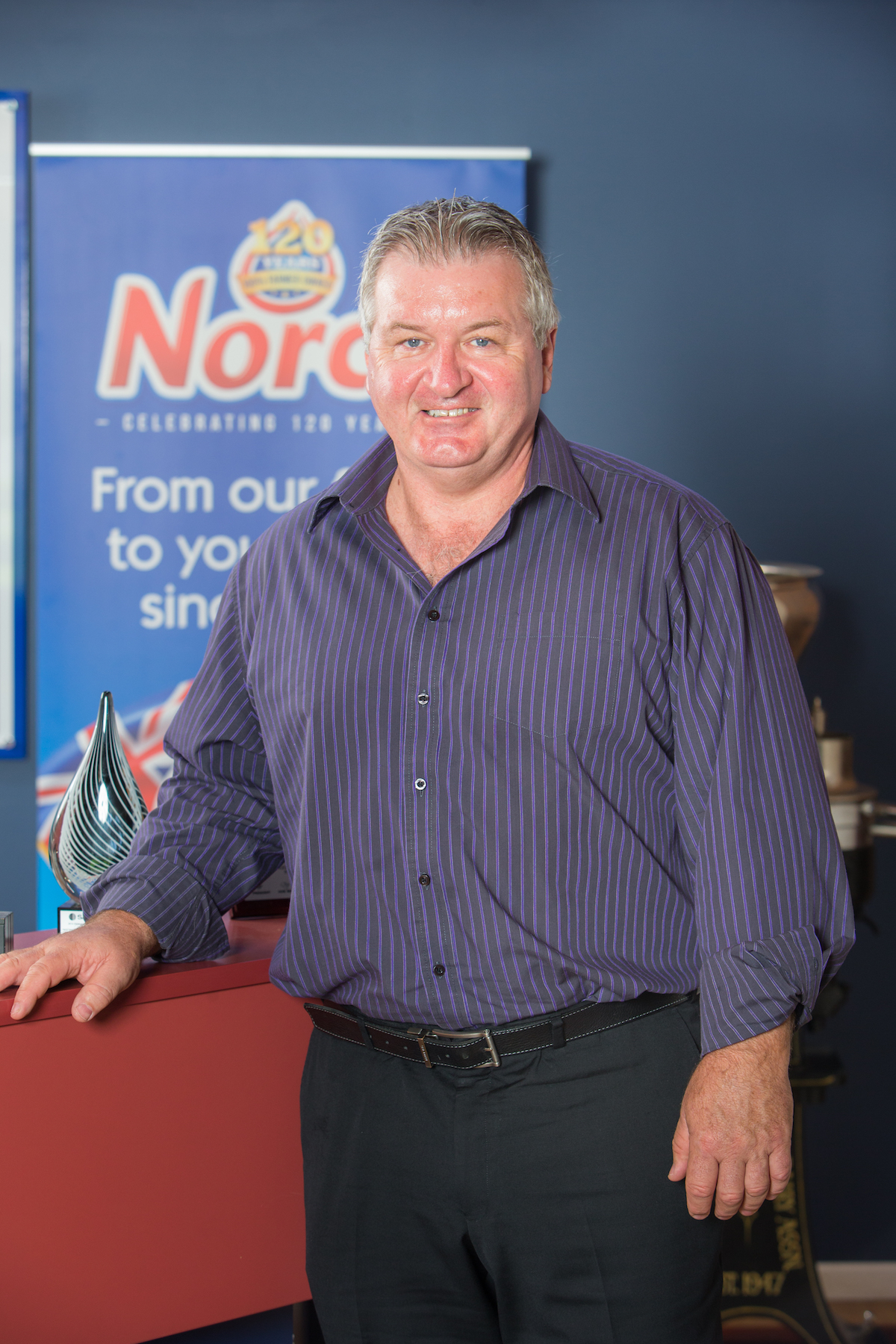Many Australians have been consuming Norco Co-operative’s milk and ice-cream products for a long time. They are proud to support a company that is 100% owned by the country’s farming community. CEO Brett Kelly joined the business 8 years ago and chats to The CEO Magazine about the changes he has implemented, why he wants to tap into the café culture, and Norco’s foray into the Chinese fresh-milk market.
The CEO Magazine: When you first joined, Norco was approximately a $300-million business. That figure has since doubled and is set to hit the $1-billion mark in five years time. Tell us about that journey.
Brett: Norco was a bit of a sleeping giant. The challenge back then was to refocus; to find out where we best fit into the marketplace. We were in some financial difficulties and needed a lot of change. The co-op is 121 years old, and within my first 6 months as CEO, there were probably more changes made to the business structure than there had been in 30 years. We developed some key marketing strategies, focusing on what gave us a competitive edge — the fact that we are a 121-year-old farmer-owned co-op, and the last one of our kind in the Australian dairy industry. We are certainly not the cheapest, but we have the best quality. When a consumer purchases a Norco product, they know that 100% of the profits made will go back to the farmers.

“When a consumer purchases a Norco product, they know that 100% of the profits made will go back to the farmers.” – Brett Kelly
I have had a lot of experience with turnaround jobs, and I think there are 4 key rules that you need to adhere to. The first one is people. You have to surround yourself with the right people —winners attract winners. The second is cost. Even if you are successful and profitable, you must have a plan of attack with regard to cost every single year. The third is focus, and that is, you need to look at each of the business units and ask: Who is the customer and where does the company fit into that marketplace? Then you focus only on that; you don’t get distracted. Finally, the fourth is strategy. How do you get from A to B? Last financial year, we achieved budget. We are paying, on average, the highest farm gate milk price for our members; we have low debt, good turnover and all of our business divisions sales are up.
How do you plan to grow the business from here?
There are three key areas. One is our export business. We’re the biggest contract packer in Australia for ice-cream, and we are now looking to develop our fresh-milk exports as well. Two is the excellent relationship we have with the retailers. We believe
we can continue to grow those relationships based on the quality of both the ice-cream and fresh milk.
And three is that we are in what we call the ‘route trade’ where we service all the cafés and smaller operators. That is an area that I am really pushing. When you look at the café market, there is a huge scene in Australia.
The coffee houses sell their products based on quality and the story behind the beans. However, you don’t hear anything about the milk. In a normal white coffee, three-quarters of the cup is milk. We do a lot of that business, but the key difference again for Norco is that we have this great story to tell as a 121-year-old farmer-owned co-op. We have no external shareholders and whatever we achieve goes back to the farmer. I want to be able to share that with the coffee drinkers too, and I believe it is a market that Norco has a really niche position in. We have this fantastic platform with a great story and product. It is just amazing how the consumer is happy to pay a fair price if they know the returns are going back to the right place: to the farmer. We are unique in that perspective.

Norco was the first Australian company to supply fresh milk to China, a market that has long been dominated by long-life and UHT products. Why did the co-op decide to make this move?
We wanted to go in with a point of difference, and Australia — being marketed as a clean and green country — was a good place to start, combined with our long history as a farmers’ co-op. It took us about three years, but we came up with a plan called Parallel Testing. The challenge was that seven days of testing were required before taking the products from Australia to China and then another seven days of testing once it reached China. If you take into account the lifespan of the fresh milk and the time it takes to fly it overseas, then there was not much time left to sell it. The Parallel Testing structure, which was approved by customs in China, meant that we could get the milk from the farm to the supermarket in about eight days. So we broke into China, and that has been quite successful so far. Fresh milk retails there for about $8 per litre.
How do you work with your members and suppliers to develop and sustain mutually beneficial relationships?
The most important thing is that the co-op is 100% owned by its members. The Board of Directors are the farmers, and then we have the senior management team. Our transparency is one of our advantages because, what happens in this industry is that the farmers live and die by the farm gate prices. The moment you bring in external shareholders, quite rightly they are looking to better their yield and return. We have no external shareholders, so our members know we need to make enough for an acceptable profit to reinvest, but that everything we make above that goes back to them. We have regular supplier–member meetings, about four times a year, and we have a huge turnout at those. We go through all of the financials, the strategies, and answer any questions. I believe our members truly understand that we are a highly successful business but that it all belongs to them; they are the owners.



